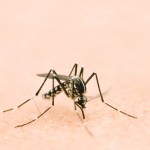An article in The New York Times (NYT) several days ago opened a new topic and re-visited an old discussion in our household. The title was telling, "At These Hospitals Recovery is Rare, but Comfort is Not" and talked about what Medicare calls long-term care hospitals (LTCHs). I had never hear of the term.
The article said there were 400 of these facilities in the United States, but lots of practicing physicians are unaware of them. I did an online search and found a 20-bed facility in thus category about 15 miles from where we live and a 63-bed hospital in Denver, roughly 65 miles away. I wasn't sure of any in the southeastern part of Wyoming, 40-50 miles north of us.
The Medicare website on Long-Term Care hospitals says they focus on those whose inpatient stay is likely to be more than 25 days. The contrast is stark as this is an age when many surgeries are done in a technically "outpatient" fashion (the current definition of an inpatient says you're in the hospital at least two midnights). Medicare says LTCHs specialize in treating patients, even those with more than one serious medical condition, who may improve with time and eventually return home.
Yet the NYT piece talks of patients who are critically ill, may be unresponsive, even comatose and, except for those who are younger and have been in an accident, may stay for months, years, or the rest of their lives. In 2010 another NYT article discussed significant issues with some LTCHs.
At that point my wife and I both said, "Don't put me in a LTCH!" We are 73 years old, relatively healthy at the present time, and enjoy life. We have living wills and medical durable power of attorney documents naming each other as first decision makers if we can't choose for ourselves.
I've mentioned before how my parents approached this quandary. Mom had a cardiac arrest at age 74, was resuscitated by Dad who was still a practicing physician, and lived 16 more years. But when she was in her declining last four years and they had moved from totally independent living to a seniors' residence, they encountered a situation that influenced their future decisions. Mom had a minor acute illness and moved short-term into an associated facility.
She was there for a few days to get some antibiotics and nursing care, but in the next room was a woman, the wife of one of their friends, who had been in extended care for seven years. For the last four of those she no longer recognized her husband, yet he requested treatment of her bouts of pneumonia on three separate occasions. Dad and Mom each said, "Don't do that to me!" They had signed the appropriate end-of-life documents before Mom showed signs of initial dementia.
A 2011 article in Kaiser Health News stresses that making end-of-life decisions can be tough, especially if they aren't made in advance. But a professor of ethics was noted as saying more than 90% of all families who have a loved one in intensive care want to hear prognostic information that will help them make those difficult decisions.
Hospital care has changed..a lot, since I last saw inpatients. It used to be that the physician who organized your treatment was the same one you saw in her or his outpatient office. Now the primary care physicians I know, unless they are part of a residency program, don't see their long-term patients at all when they are hospitalized. Instead patients see an ER doc, a hospitalist (physician whose focus is inpatient care) and, if they go to an ICU, an intensivist.
Intensivists are physicians who have completed specialty training, often in Internal Medicine or Anesthesia and then take an additional two-to-three year fellowship in critical care medicine (some are triple board certified, in lung disease (Pulmonology), for example. They are often thought of as primary critical care physicians and in major academically-oriented clinics and their associated hospitals (e.g., the Cleveland Clinic), they may provide most or all of the physician care in the ICU.
The article from the NYT said we spend over $25 billion a year in long-term acute care in the United States., The path to landing in a LTCH often begins in an ICU. The major task for intensivists is keeping patients alive during critical illnesses. That often means deciding on short- or long-term-ventilator support, the possibility of a tracheostomy (a surgically created hole through the front of the neck into the trachea (AKA windpipe) to allow this, feeding tubes of several varieties or long-term intravenous access.
I don't ever want to be on a ventilator long-term. I might allow one short-term if I had a clearly treatable, potentially curable patch of pneumonia, for instance, but I would want to set a time allowance for that.
When my mother quit eating, her physician wanted to create a long-term method of feeding her, a percutaneous endoscopic gastrostomy (PEG). If someone cannot eat and needs to be fed long term, one method of doing so is to place a PEG tube through the wall of the abdomen directly into the stomach.
This could be done for someone who has had a stroke and is at risk of aspirating food if fed normally. In my Mom's case, by then she had developed significant dementia and Dad said, "We've made our decisions; she is not having a PEG tube."
She could have gone into a LTCH and lived a while longer, but Dad knew that her refusal to eat meant she had come to a logical stop point.
There are an estimated 380,000 patients in LTCHs at present. Some (roughly 10 to 15%) are there for appropriate reasons and have a reasonable chance of recovery; many are not. A study by a Duke critical care specialist found half who enter these facilities die within a year; a majority of the remainder are in "custodial care."
I don't choose to join their ranks.
So there are some decisions that you and your family may want to make. I'd suggest you read the NYT articles and think about what your choices might be. It's never easy, but a careful discussion in advance with your long-term goals in mind makes sense.




